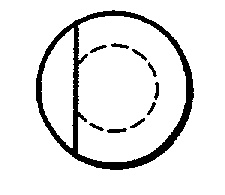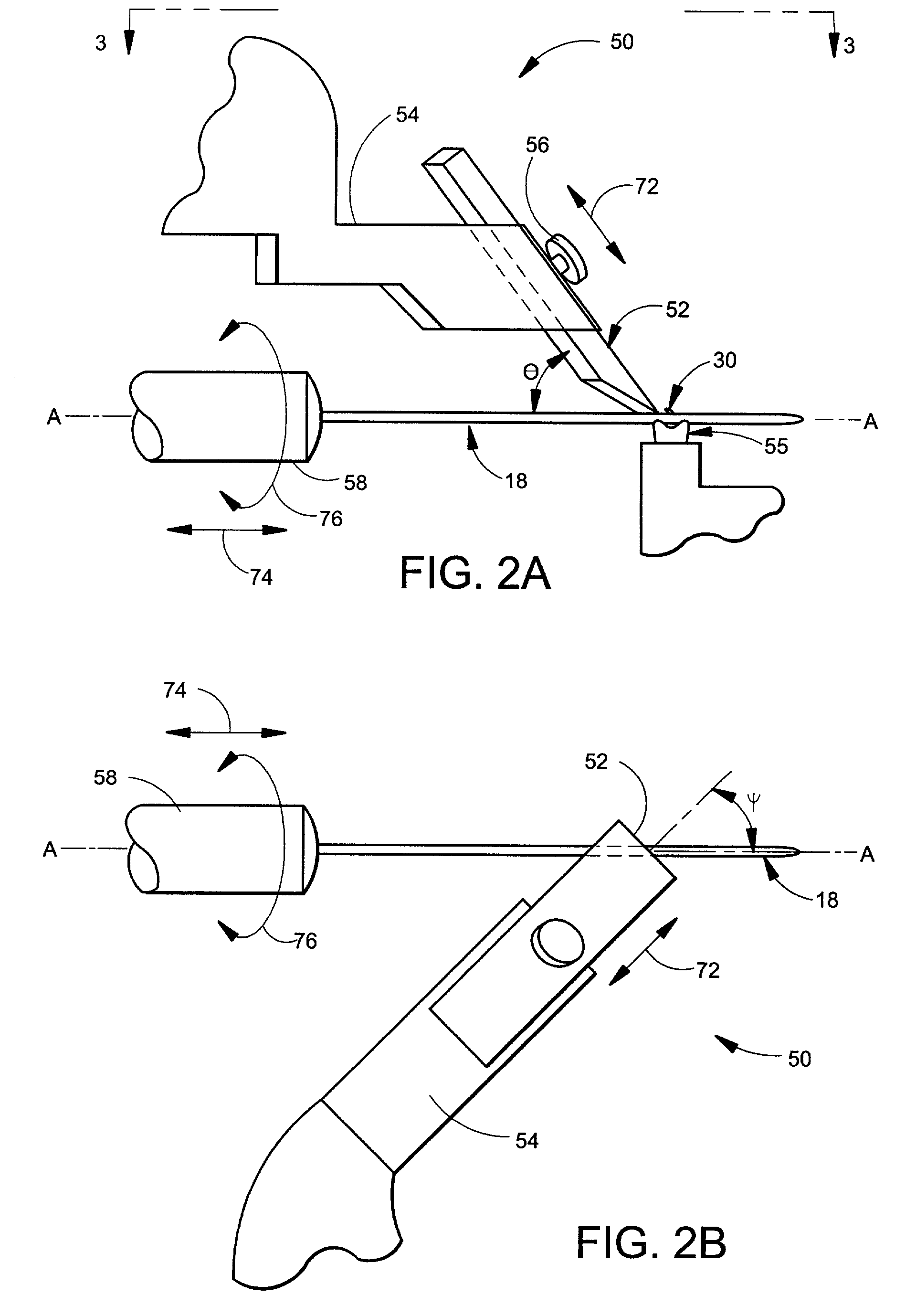Barbed endodontic instrument
a barbed endodontic and instrument technology, applied in the field of dental care, can solve the problems of limited success in the approach, tools can pose a significant danger of breaking in the curved root canal, and it is difficult to gain access to the full length of the root canal, so as to reduce the number of instruments needed, reduce the tendency to break during use, and increase the effect of root canal enlargemen
- Summary
- Abstract
- Description
- Claims
- Application Information
AI Technical Summary
Benefits of technology
Problems solved by technology
Method used
Image
Examples
Embodiment Construction
[0030]FIG. 1 schematically shows an endodontic file inserted into the root canal 12 of a tooth, including the pulp tissue 24 and dentin 20 to be removed from the root canal 12. The endodontic file 16 is inserted through a hole formed in the crown 22 of the tooth, and into the root canal 12. It may be rotated there within, or it may be moved inward and outward in a reciprocating motion, or a combination thereof, as desired.
[0031]All of the endodontic files illustrated and described herein are preferably formed from a select alloy of titanium and nickel (Ni—Ti)—commonly known as “NiTi” Nitinol™. Such materials may be obtained from any one of a number of supplier / fabricators well known in the specialty metals supply industry. Useful alloys with 49.0 to 50.7 atomic % of Ti are commercially available, but alloys in the range of 49.0 to 49.4% Ti are most preferred for purposes of practicing the present invention. Special annealing processes, heat treatments and / or the addition of trace el...
PUM
 Login to View More
Login to View More Abstract
Description
Claims
Application Information
 Login to View More
Login to View More - R&D
- Intellectual Property
- Life Sciences
- Materials
- Tech Scout
- Unparalleled Data Quality
- Higher Quality Content
- 60% Fewer Hallucinations
Browse by: Latest US Patents, China's latest patents, Technical Efficacy Thesaurus, Application Domain, Technology Topic, Popular Technical Reports.
© 2025 PatSnap. All rights reserved.Legal|Privacy policy|Modern Slavery Act Transparency Statement|Sitemap|About US| Contact US: help@patsnap.com



